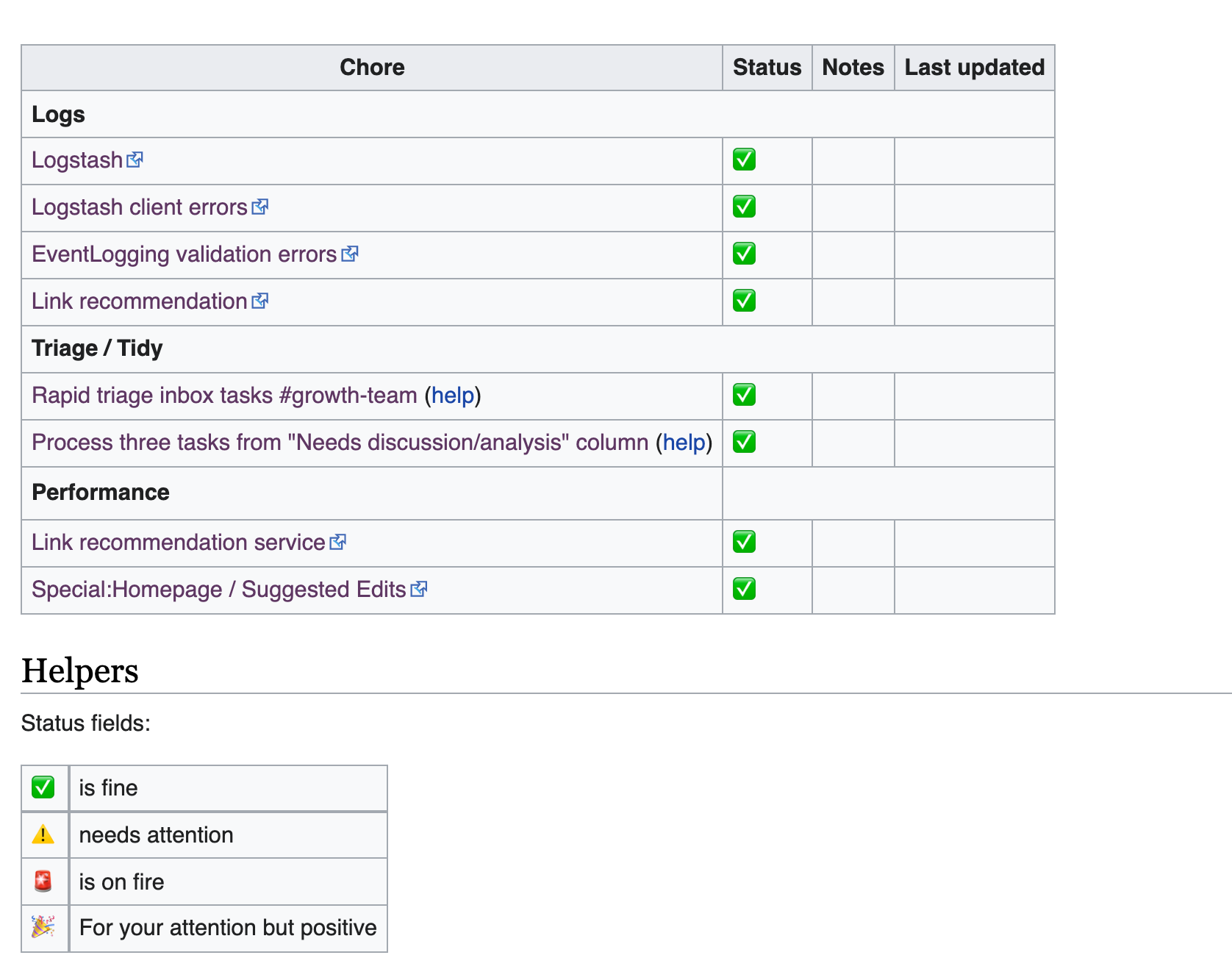It has been my philosophy of life that difficulties vanish when faced boldly.
― Isaac Asimov
Since doing household chores is undoubtedly makes a house cleaner and better organized, so doing the team chores have the same effect on a team work. Creating a list of tasks for important team activities and going through that list regularly makes handling workload better, monitoring for issues better, and, ultimately, makes the overall quality of delivered products better. The Growth team has been practicing chores list duties for several months now and the results seem to be useful, helpful and even delightful.
It's all started with the idea of chores the Web team has implemented on Web team chores page. The page has a list of monitoring/triaging activities that are done every weekday by different team members. The Growth team has largely adopted the structure of the chores - Growth Team Chores ( thanks @kostajh!) . The Growth Team Chore list page explains details of doing Growth Team Chores and provides some guidance and instructions on how to do the chores efficiently. Both Growth team pages get regular evaluation on how well they reflect the current team's workflows and priorities, and whether the chores suit the needs of the current team projects.
Let's do a quick overview of the format for the chores list. The list of chores is a table that has three groups of chores - monitoring logstash (Logs) , triaging incoming phabricator tickets (Triage/Tidy), and looking for potential performance issues (Performance).
Two columns - Status and Last updated have important information on the state of those sections and when the info has been updated. The Status icons indicate whether something needs attention or not, and Last updated column should have a signature of a person who did the chores and a timestamp
Logs section has links to the Growth team dashboards. There are four separate dashboards for server-side errors, client-side errors, and for the event validation errors. The last link is for the Link recommendation service dashboard. Next section - Triage/Tidy refers to new phab tasks that are recently filed or have been moved into Needs discussion/analysis column on the Growth team workboard. And the last section, Performance, refers to grafana dashboards.
Going through the chores tasks turned out to be an insightful QA practice. Doing chores is useful . From the QA process point of view, the error reports in logstash might give a good picture on what issues are there and, more importantly, how they might be (or already are) affecting users. Ideally, each error report should be evaluated for its severity and frequency. Some errors are severe because they impact user experience or they may be severe because the number of reports is high.
The practice of going through the chores is also helpful - as a QA, I may see that some features need more testing, or that a different testing approach needs to be designed. Some errors might need to be investigated for user impact, or for how to reproduce it. So, there might be lots of valuable info for modifying testing methods and practices.
And, finally, it's really rewarding and even delightful to do such chores! The list of chores adds structure and reduces uncertainty. It increases the probability of catching bugs 🕷 sooner rather than later, thus, minimizing bugs' visibility and their impact. In addition, there might be bugs that haven't been caught during feature testing due to specific configuration or other environmental parameters that were difficult (or, sometime, even impossible) to have in a testing environment.
- Projects
- None
- Subscribers
- None
- Tokens
